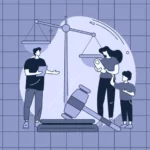Call: (800) 382-3176 or Chat with us
Can Cerebral Palsy Be Caused by Malpractice?
Cerebral palsy can have a profound impact on a child’s life, often resulting in lifelong disabilities. But what if the cause of your child’s cerebral palsy was preventable, a direct result of medical malpractice? It’s a distressing thought, yet a reality for some families. In this blog post, we will explore the question, “can cerebral palsy be caused by malpractice?”, how to identify negligence, and what you can do to seek justice and compensation.
By understanding the legal options available, you can take control of your child’s future. Together, let’s delve into this complex topic, unravel the legal intricacies, and empower you to make informed decisions for the wellbeing of your child.
Overview of the Types of Cerebral Palsy
- Spastic Cerebral Palsy: This is the most common type of CP. It causes increased muscle tone, leading to stiff and jerky movements. Spastic CP is typically classified by the body parts affected:
- Spastic Diplegia/Diparesis: Mainly affects the legs.
- Spastic Hemiplegia/Hemiparesis: Affects one side of the body (arm and leg on one side).
- Spastic Quadriplegia/Quadriparesis: This condition impacts the movement of all four limbs, the trunk, and the face.
- Dyskinetic Cerebral Palsy (also known as Athetoid): This type involves fluctuations in muscle tone (either too tight or too loose) and is characterized by uncontrolled, involuntary movements. It affects the hands, feet, arms, or legs, and sometimes the face and tongue, causing difficulties in speaking and swallowing.
- Ataxic Cerebral Palsy, a less common type of CP, primarily impacts balance and coordination. Individuals with ataxic CP may experience instability while walking and encounter challenges when performing tasks that require rapid or precise movements, such as writing or buttoning a shirt.
- Mixed Cerebral Palsy: This type includes symptoms of more than one of the above types. The most common combination seen in mixed CP is spastic and dyskinetic CP.
Blog Summary
- Medical malpractice can lead to brain damage and cerebral palsy, making it a potential cause of medical negligence.
- An experienced attorney is essential for identifying medical negligence in cerebral palsy cases and pursuing legal action.
- Proving liability requires establishing a breach of duty and demonstrating causation through relevant documents & evidence.
Medical Malpractice and Cerebral Palsy: The Connection

Medical malpractice occurs when a healthcare provider’s negligence results in injury or harm to a patient. In cases of medical malpractice cerebral palsy, malpractice can occur during pregnancy or birth, leading to brain damage and lifelong disabilities. If you suspect a medical error may have caused your child’s cerebral palsy, an experienced attorney can help you ascertain the validity of your claim.
Understanding the connection between medical malpractice and cerebral palsy can be the first step towards seeking justice and compensation for your child. We will examine the various ways in which medical errors during pregnancy and birth can cause cerebral palsy, along with potential legal options you might have.
Medical Errors During Pregnancy and Birth
Medical errors during pregnancy and birth, such as:
- Improper monitoring
- Failure to address complications
- Improper use of forceps or vacuum extractors
- Delayed C-sections
Errors during the birthing process can cause a child to develop cerebral palsy. These errors may constitute a basis for a malpractice claim. Negligence in cerebral palsy cases can lead to a birth injury, and as a result, a child developed cerebral palsy.
Neglecting complications during pregnancy can result in serious consequences, such as potential brain injury and cerebral palsy in the baby. Complications such as:
- Premature delivery
- Issues with the umbilical cord
- Detached placenta
- Abnormal heart
- Maternal infections
Can all lead to cerebral palsy if not addressed, and may result in a cerebral palsy lawsuit. You should consult with a birth injury lawyer to evaluate if you have grounds for a malpractice claim.
Oxygen Deprivation and Brain Damage
Oxygen deprivation during birth can lead to brain damage and cerebral palsy. If this deprivation is caused by medical negligence, it may be considered malpractice. Research suggests that oxygen deprivation can lead to cerebral palsy by causing brain damage, as insufficient oxygen supply to the brain can cause the death of brain cells and disruption of normal brain development, resulting in motor and cognitive impairments associated with cerebral palsy.
A medical professional’s negligence in addressing oxygen deprivation during childbirth can lead to a malpractice claim. Medical procedures employed to avert oxygen deprivation during birth include:
- Umbilical cord blood gas analysis
- Continuous fetal heart rate monitoring
- Emergency cesarean section
- Oxygen therapy
- Cooling therapy
Failure to employ these procedures when necessary can result in a child developing cerebral palsy due to medical negligence, highlighting the importance of a child’s cerebral palsy treatment.
Identifying Medical Negligence in Cerebral Palsy Cases

Identifying medical negligence in cerebral palsy cases involves investigating the circumstances surrounding the birth and determining if the standard of care was breached. A thorough investigation by an experienced attorney, such as those at Percy Martinez Law Firm, can help determine if medical malpractice played a role in causing cerebral palsy.
We will discuss how to investigate potential malpractice and identify the typical forms of negligence found in cerebral palsy cases.
Investigating Potential Malpractice
A comprehensive investigation is key in establishing if medical malpractice played a part in causing cerebral palsy. The necessary steps to collect facts and evidence related to the case involve obtaining pertinent information and medical records, as well as consulting with expert witnesses to ascertain if medical malpractice occurred.
To ensure the integrity of evidence, it must be stored in a secure location and all attempts to tamper with or destroy it must be prevented. Witness testimony can be acquired through the process of interviewing witnesses and taking written statements from them.
Attorneys need to obtain and assess copies of the victim’s medical records from the medical professional involved, looking for any signs of medical malpractice.
Common Types of Negligence
Common types of negligence in cerebral palsy cases include failure to monitor, improper use of forceps or vacuum extractors, and delayed C-sections. Inadequate monitoring during childbirth can have a significant impact on cerebral palsy cases by failing to detect fetal distress and properly monitor the baby’s heartbeat. This can lead to delays in recognizing and responding to signs of fetal distress, potentially resulting in brain damage and other birth injuries that can cause cerebral palsy.
Improper use of forceps or vacuum extractors during childbirth can potentially result in serious injuries to the newborn, such as:
- Brain damage
- Head injuries
- Tailbone injury
- Tearing and lacerations in the vaginal area
- Bladder or urethra injury
- Blood clots
- Scalp wounds
- Shoulder dystocia
- Skull fracture
- Facial injuries
- Facial palsy
- Eye trauma
- Skull fracture
Delayed C-section is deemed negligence in cerebral palsy cases due to its potential to cause preventable birth injuries, leading to cerebral palsy.
Pursuing a Cerebral Palsy Medical Malpractice Lawsuit

Pursuing a cerebral palsy medical malpractice lawsuit involves choosing the right attorney, filing a claim, and gathering evidence to support your case. The process of filing a claim and gathering evidence, such as medical records and expert testimonies, is crucial to building a strong case for cerebral palsy medical malpractice.
We will examine the steps to select the appropriate attorney, file your claim, and the significance of gathering requisite evidence to establish causation in cerebral palsy medical malpractice cases.
Choosing the Right Attorney
The Percy Martinez Law Firm specializes in medical malpractice cases and can provide expert guidance and representation in cerebral palsy lawsuits. With over two decades of experience and a strong track record in representing cerebral palsy victims, the Percy Martinez Law Firm is well-equipped to handle your case and ensure the best possible outcome. Testimonials regarding their services can be found on their website at https://percymartinezlaw.com/reviews/.
Choosing an experienced cerebral palsy attorney is critical to comprehend your legal options and to file your claim within the proper time frame. A knowledgeable attorney can guide you through the complex legal process and help you pursue financial compensation for the damages caused by medical negligence.
Filing Your Claim and Gathering Evidence
Filing a claim and accumulating evidence are vital steps towards forming a robust case for cerebral palsy medical malpractice. Your attorney will work to assemble the necessary evidence, such as medical records, expert testimonies, and documentation of negligence, to establish that the healthcare providers were responsible for your child’s cerebral palsy.
In a medical malpractice case, evidence such as:
- Medical records
- Expert testimony
- Witness testimony
- Scientific studies and research
- Documentation of the standard of care
- Documentation of the defendant’s actions or omissions
are typically used to demonstrate causation. Collecting this evidence and presenting it effectively in a legal claim is significant in establishing negligence and obtaining compensation to cover your child’s medical and therapy costs, among other damages related to their cerebral palsy.
Compensation for Cerebral Palsy Medical Malpractice

Compensation for cerebral palsy medical malpractice can help cover medical expenses, therapy costs, and other damages related to the child’s condition. The amount of compensation depends on various factors, including the severity of the injury and the specific circumstances of the case. Compensation can alleviate the financial burden of ongoing medical care, therapy, and other expenses associated with cerebral palsy.
It’s important to seek advice from an experienced cerebral palsy attorney to understand the potential compensation you may be entitled to in your case. By understanding the types of compensation and the factors that determine the amount, you can better navigate the legal process and secure the best possible outcome for your child.
Proving Liability in Cerebral Palsy Malpractice Cases

Proving liability in cerebral palsy malpractice cases involves establishing a breach of duty by the healthcare provider and demonstrating that this breach directly caused the child’s cerebral palsy. This can be a complex and challenging process, often requiring expert testimony to establish a direct link between the provider’s negligence and the child’s condition.
We will look into the process of pointing out a breach of duty, demonstrating causation in cerebral palsy malpractice cases, and how an adept attorney can guide you through this complicated process.
Establishing a Breach of Duty
Establishing a breach of duty requires proving that the healthcare provider failed to meet the standard of care expected in their profession, resulting in harm to the patient. In cerebral palsy malpractice cases, a breach of duty is established when it is demonstrated that a doctor or healthcare provider has not adhered to the accepted standard of care, thereby causing harm or injury to the patient.
Examples of breach of duty in situations leading to cerebral palsy include:
- Negligent care during childbirth
- Failure to adhere to the accepted standard of conduct in the same situation
- Violation of the accepted standard of care by healthcare professionals
Pointing out a breach of duty is a pivotal step towards affirming liability in cerebral palsy malpractice cases.
Demonstrating Causation
Demonstrating causation involves showing a direct link between the healthcare provider’s negligence and the child’s cerebral palsy, which can be challenging and often requires expert testimony. Qualified medical experts can help elucidate how the defendant failed to adhere to the professional standard of care and caused the cerebral palsy.
To establish causation in cerebral palsy malpractice lawsuits, consolidating documents such as:
- Medical records
- Maternal medical history
- Photographs
- Hospital bills
Is crucial. Furthermore, demonstrating damages resulting from cerebral palsy is also imperative in demonstrating causation in these lawsuits.
An experienced birth injury attorney can guide you through this process and help gather the necessary evidence to prove causation in your case.
Statute of Limitations for Cerebral Palsy Medical Malpractice Claims
The statute of limitations for cerebral palsy medical malpractice claims varies by state, so it is essential to consult with an experienced attorney, like those at Percy Martinez Law Firm, to ensure your claim is filed within the appropriate time frame. If the statute of limitations is not adhered to, the potential to take legal action on behalf of the child may be forfeited.
Being aware of the statute of limitations in your state is key when pursuing a cerebral palsy medical malpractice claim. By consulting with an experienced attorney, you can ensure your claim is filed in a timely manner and increase your chances of securing compensation for your child’s cerebral palsy.
Summary
In conclusion, medical malpractice can have a profound impact on a child’s life, particularly when it results in cerebral palsy. By understanding the link between medical malpractice and cerebral palsy, the process of identifying negligence, and the legal options available, you can take control of your child’s future and seek justice and compensation.
If you suspect that your child’s cerebral palsy was caused by medical malpractice, don’t hesitate to seek the guidance of an experienced attorney. They can help you navigate the complex legal process, gather the necessary evidence, and work towards securing the best possible outcome for your child.
Frequently Asked Questions
Is cerebral palsy medical negligence?
Cerebral palsy can be a result of medical negligence, and if that is the case for your child, you may be eligible for financial compensation.
Can cerebral palsy be caused by abuse?
Yes, cerebral palsy can be caused by abuse, specifically shaken baby syndrome.
What is the main cause of cerebral palsy?
Cerebral palsy is usually caused by a problem that affects the development of a baby’s brain while it’s growing in the womb, such as damage to the white matter or a reduced blood or oxygen supply. It can also be caused by damage or abnormal development in the parts of the brain that control movement. In many cases, the exact cause of cerebral palsy is unknown.
How much do you get for a child with cerebral palsy?
For families with a child with cerebral palsy, Supplemental Security Income (SSI) is available in the form of monthly checks to assist them financially. The base amount for SSI in 2023 is $914 a month per eligible individual.
What are some common types of negligence that can lead to cerebral palsy?
Negligence such as failure to monitor, improper use of forceps or vacuum extractors, and delayed C-sections are common causes of cerebral palsy.








